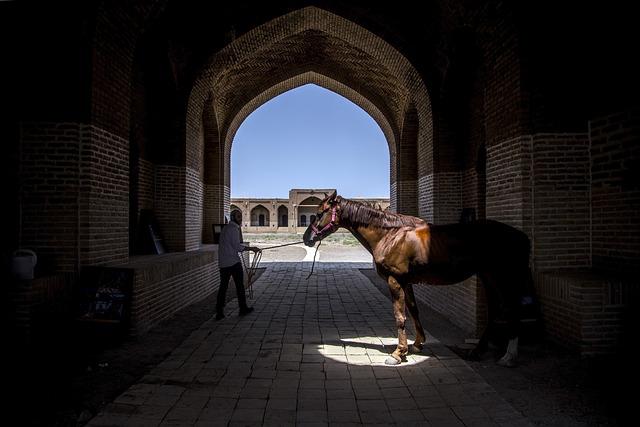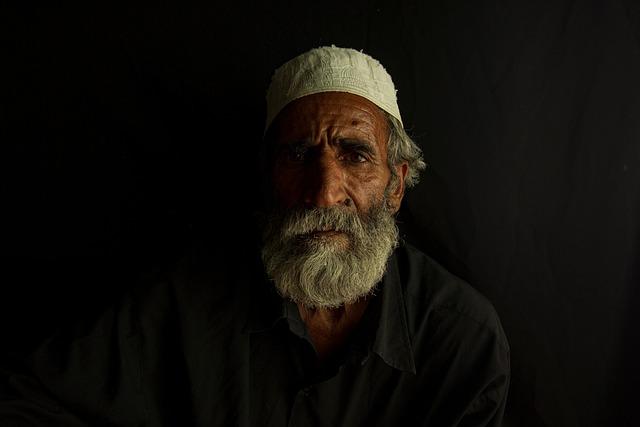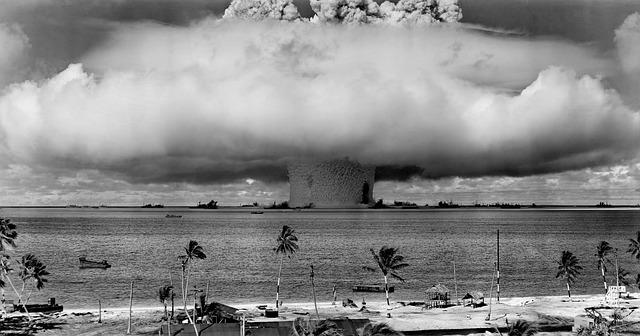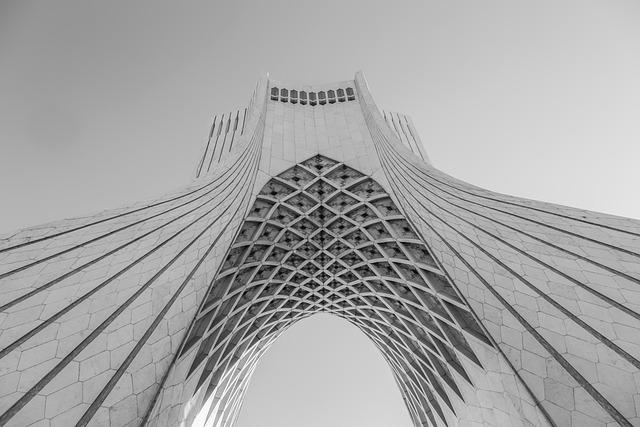In the complex landscape of international diplomacy, few issues are as contentious and pivotal as Iran’s nuclear program. the quest for a nuclear deal has seen fluctuating progress over the years, marked by negotiations, sanctions, and geopolitical maneuverings. In his insightful article “Is iran Ready for a Nuclear Deal?” Max J.Prowant delves into the current state of affairs surrounding Iran’s nuclear ambitions and the global response. With tensions mounting and the stakes higher then ever, Prowant examines whether Iran’s leadership is genuinely prepared to engage in meaningful discussions, address international concerns, and pave the way for a sustainable resolution. As the world watches closely, this article seeks to unravel the complex motivations, strategies, and potential outcomes that shape the future of Iran’s nuclear ambitions and the implications for global security.
The current State of Iran’s Nuclear Program
The landscape of Iran’s nuclear program has transformed substantially in recent years, marked by escalating tensions and fluctuating diplomatic engagements. As of now, Iran has expanded its uranium enrichment activities, moving closer to weapons-grade levels, despite ongoing international scrutiny and sanctions. The Joint Comprehensive Plan of Action (JCPOA), originally established in 2015, remains a point of contention, as its collapse raises concerns about the nuclear capabilities that could be developed in the absence of a robust monitoring mechanism. Recent actions by Iranian authorities indicate a willingness to negotiate, yet whether this is genuine or a tactical maneuver to alleviate economic pressure remains disputed.
Key developments within Iran’s nuclear agenda include:
Increased Enrichment Levels: iran has reportedly enriched uranium up to 60%, a stark departure from the 3.67% limit set by the JCPOA.
Advanced Centrifuges: The use of newer, more efficient centrifuges enables Iran to accelerate its enrichment process, enhancing its potential to develop nuclear weapons.
International response: The global community, particularly the U.S. and European nations, express concerns over a nuclear-capable Iran, leading to diplomatic endeavors to revive negotiations.
As talks regarding a potential nuclear deal continue, the question of Iran’s commitment to non-proliferation remains at the forefront of international relations. Observers note that a successful agreement hinges on not onyl the lifting of sanctions but also on establishing a credible framework for inspection and compliance. A recent analysis of Iran’s nuclear timeline highlights critical milestones:
Year
Milestone
Significance
2015
JCPOA Signed
Brought temporary rollback of nuclear activities in exchange for sanctions relief.
2018
U.S. withdraws from JCPOA
Reinstatement of harsh sanctions reignites Iran’s nuclear pursuits.
2021
Negotiations resume
Diplomatic efforts to revive the JCPOA gather pace amid mounting tensions.

Key Stakeholders in the Nuclear Negotiations
The landscape of nuclear negotiations is complex, with various key stakeholders wielding significant influence over the direction and outcomes of discussions.Among these,the following players stand out:
The United states: As a primary player in the negotiations,the U.S. has been a staunch advocate for denuclearization, presenting both sanctions and diplomatic avenues for Iran.
Iran: Central to the discussions, Iran’s approach and willingness to compromise are pivotal in shaping the agreements reached.
The european Union: Acting as a mediator,the EU attempts to balance the interests of its member states with those of Iran and the U.S., often pushing for diplomatic resolutions.
China and Russia: Both countries possess significant geopolitical interests in iran,often advocating against U.S. sanctions and supporting Iran’s right to nuclear energy.
International Atomic energy Agency (IAEA): This body plays a critical role in monitoring Iran’s nuclear activities and ensuring compliance with international agreements.
Moreover, public opinion and domestic political pressures also shape these negotiations significantly. Factors influencing these dynamics include:
Influencing Factors
Impact on Negotiations
Sanctions
Heightened pressure on Iran to negotiate more favorable terms.
Regional Stability
concerns about nuclear proliferation increasing resistance from neighboring countries.
Domestic Politics
Leadership changes can shift priorities and approaches toward negotiations.
Public Sentiment
influences diplomatic approaches and policies from major stakeholders.

Impact of Regional Tensions on Deal Prospects
Regional tensions in the Middle East have often overshadowed the prospects of meaningful negotiations regarding Iran’s nuclear ambitions. Between the longstanding rivalry with Saudi Arabia, the ongoing conflicts in Syria, and the complex dynamics with Israel, these factors create a volatile backdrop that complicates diplomatic efforts. Iran’s strategic calculations are deeply intertwined with these regional issues, as it seeks to bolster its influence and security through both political maneuvering and military presence.The potential for escalated military confrontations can derail talks, as perceived threats lead to defensive postures, making compromise more elusive.
Moreover, the response from global powers significantly impacts the negotiating landscape.The possibility of new sanctions or military actions in reaction to Iran’s nuclear advancements contributes to an atmosphere of mistrust. Key players in the region, such as the United States and its allies, remain vigilant about Iran’s capabilities, which can lead to a cycle of provocations and retaliations. The interests at stake encompass various dimensions:
Interest
stakeholder
Regional Stability
united States, Saudi Arabia
Nuclear Proliferation Risk
Israel, European Union
Energy Security
Global Powers
Military Balance
Iran, Gulf States
As each stakeholder navigates their unique concerns, the quest for a nuclear deal remains inextricably linked to broader geopolitical realities. The combination of domestic pressures within Iran and external threats from adversaries signifies that any path towards diplomacy is fraught with challenges. The evolving situation demands a nuanced understanding of how regional tensions can either facilitate or hinder the prospects of reaching a comprehensive agreement.

Lessons from past Agreements and Failures
Examining the trajectory of past agreements surrounding Iran’s nuclear program reveals critical insights into both the potential and the pitfalls of diplomacy in this complex arena.Previous negotiations, such as the 2015 Joint Comprehensive Plan of Action (JCPOA), highlighted several key factors that ultimately influenced their success or failure. Among these,the significance of clearly defined enforcement mechanisms emerged as paramount,as any ambiguity regarding compliance resulted in escalating tensions. Moreover, the role of external pressure from regional and global stakeholders underscored the necessity for a united front, lest differing agendas fragment negotiations and give rise to conflict.
The failures of earlier agreements, such as the inability to fully address Iran’s ballistic missile program or its regional activities, illustrate that a successful renewal of negotiations requires a more comprehensive framework.Insights gathered suggest that future agreements must take into consideration the following elements:
Comprehensive monitoring: A strong verification regime to ensure adherence to terms.
Regional Diplomacy: Engagement with Middle Eastern neighbors to foster a wider consensus.
Long-term Commitments: provisions that extend beyond mere sanctions relief to address broader security concerns.
These lessons underscore the complexity of achieving a sustainable and enforceable nuclear deal that addresses both the immediate fears and the broader geopolitical landscape surrounding Iran’s actions.

Strategic Recommendations for Future Diplomacy
To effectively engage with Iran in future diplomacy concerning nuclear developments, several strategic measures should be prioritized. First and foremost, establishing clear communication channels is crucial. This can include high-level talks that avoid the pitfalls of misinterpretation and hostility, allowing both sides to clarify their intentions and concerns. Additionally,multi-party dialogues involving regional players and global powers can create a more comprehensive framework that addresses not only nuclear concerns but also related geopolitical dynamics. By fostering an habitat of clarity and collaboration, diplomats can build trust that may pave the way for more substantive negotiations.
In parallel, it is indeed essential to implement a phased approach to sanctions relief. Sanctions have been a significant leverage point in negotiations, yet excessive rigidity may hinder progress. A roadmap that outlines incremental easing of sanctions contingent on verifiable compliance can motivate Iran to adhere to commitments while simultaneously addressing its economic challenges. Moreover, building bilateral and multilateral incentives—such as economic partnerships and technology exchanges—will not only bolster Iran’s economy but also align its interests with regional stability, creating a more favorable atmosphere for nuclear discussions.

Assessing the Global Response to Iran’s Nuclear Ambitions
The international community has grappled with Iran’s nuclear ambitions for over two decades, a situation that necessitates a thorough evaluation of the effectiveness of global responses. The imposition of sanctions has been a prominent tool in the arsenal of Western nations, aiming to curb Iran’s nuclear program and compel the regime to engage in negotiations. These sanctions have significantly impacted Iran’s economy, yet they have also had an unintended consequence: fostering a sense of nationalism that enables the Iranian government to depict itself as a victim of Western aggression rather than an aggressor.The dilemma lies in balancing pressure with diplomacy, as heavy-handed tactics can alienate moderate factions within Iran while strengthening hardliners who see defiance as a point of national pride.
As Iran continues its nuclear advancements, it’s crucial for nations involved in negotiations to reassess their strategies. Successful dialogues hinge upon a nuanced approach that considers not just Iran’s nuclear capabilities but also its geopolitical aspirations and domestic politics. To facilitate a more effective groundwork for negotiations, stakeholders should focus on:
Enhanced Diplomatic Engagement: Open channels that allow for continuous dialog.
Addressing Regional Security Concerns: Recognizing and integrating regional actors into the conversation.
Constructive Incentives: Offering tangible benefits for compliance alongside sanctions.
Ultimately,the international response must evolve from mere containment to a more dynamic strategy that engages Iran constructively,addressing both its legitimate concerns and the ambitions that threaten global security.

In Conclusion
as the international community continues to grapple with the complexities surrounding Iran’s nuclear ambitions, the prospect of a renewed nuclear deal remains fraught with challenges and uncertainties. Max J. Prowant’s analysis sheds light on not only the geopolitical stakes at play but also the domestic factors influencing Iran’s readiness to engage in negotiations. The intricate balance of power within Iran, coupled with the shifting dynamics of U.S. foreign policy, leaves much to ponder regarding the viability of a comprehensive agreement. As the dialogue progresses, both allies and adversaries will be closely monitoring developments, hoping for a resolution that fosters regional stability and safeguards against the proliferation of nuclear weapons. Whether Iran is truly prepared for compromise is a question that will continue to reverberate in diplomatic circles, underscoring the delicate nature of international relations in this ongoing saga.
The post Is Iran Ready for a Nuclear Deal? – Max J. Prowant – Law & Liberty first appeared on Capital Cities.
—-
Author : Capital-Cities
Publish date : 2025-02-24 18:40:35
Copyright for syndicated content belongs to the linked Source.